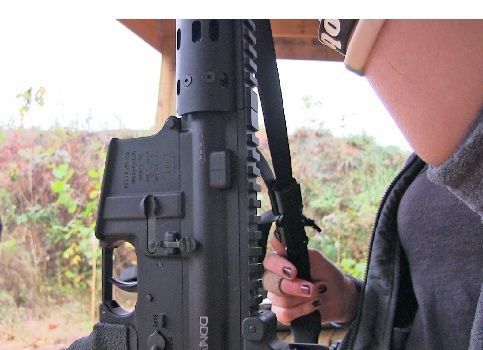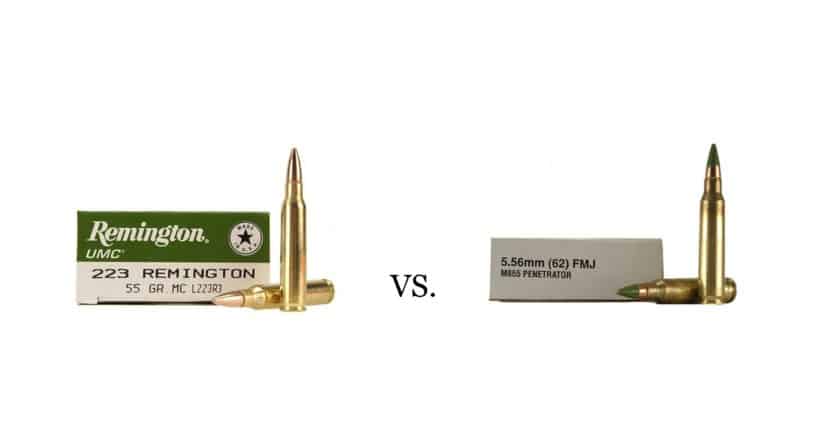The comparison between .223 and 5.56 isn’t a new one, so there is a lot of discussions to weed through to learn about the two. You may find that you need a certain type of projectile for hunting or defense, and it may come down to the performance of each. Now right off the bat, I want to inform you that the only reason these cartridges have different labels is because there are loading differences. We must also note that in some of the chambers made specifically for the .223, the beginning of the rifling is cut sharper, which can cause some pressure issues for the rifle when using 5.56 ammo. But we will get back into this later.Ultimately, because they originated from the same cartridge, they are very similar, but that does not mean that they are not necessarily interchangeable. This article discusses three key differences between .223 Remington and 5.56x45mm NATO.
History of .223 and 5.56 Cartridges
The history of the two cartridges (5.56 and .223) really started when the military was looking for a small-caliber round that could be used in their “Individual small-caliber assault rifle” research and development project.
They started with the .222 Remington cartridge and after failing some tests, Remington redesigned the round and named the new design the .222 Remington Special. This design ended up being renamed the .223 Remington. After passing the tests for the round satisfactorily, the military adopted the cartridge under the alternative measurement designation of 5.56 NATO and has remained the same since, for the most part. In the ’60s, Remington made the .223 Remington available to the commercial market where SAAMI then established standards for the cartridge, as with all other cartridges.
Comparison of the .223 Remington and 5.56x45mm
Dimension Measurements
The 5.56 and .223 have no visible differences when you look at the two side by side, nor dimensionally in any way shape, or form. The only dimensions that would be different, would be in the chamber of the rifle you are using. At glance, the two rounds are indiscernible. Both rounds use a bullet of .224in diameter and an overall length of 2.26in. In general, the external dimensions for the two calibers are identical. What’s more significant is the pressure of the two rounds and the difference in the rifle chambering.
Pressure Measurements
One of the problems with comparing these two cartridges is that they utilize different methods of measuring pressure.
- SAAMI (Sporting Arms and Ammunition Manufacturers’ Institute) measures the .223 pressure at the center of the casing.
- NATO standard measures the pressure at the throat (or leade) of the chamber.
To rectify the two different methods, several have undertaken experiments with their own standardized recording method to compare “apples to apples.” One such thorough study was carried out and recorded in detail by Andrew Tuohy posted via Lucky Gunner Labs. Tuohy evaluated various .223 and 5.56 ammo fired through rifles chambered for .223 Remington and 5.56x45mm.
His, and the research of others, confirms that, generally, shooting .223 through a 5.56 chamber results in lower pressure, but still functions (safely). Firing 5.56 through a .223 chamber, however, results in somewhat higher pressures. Although the differences aren’t massive (~5% in the previously referenced study), the extensive firing of 5.56 through a .223 chamber could lead to over-pressure malfunctions, such as popped primers or blown cartridge case heads and other firearm malfunctions.
The case thickness is also the same unless we are talking about steel/polymer hybrid cases, which are listed as a good alternative case manufacturing material to brass that won’t cause problems despite range legend.
The difference that typically makes the .223 lower in pressure is that it is regulated by SAAMI specifications, which generally lower the pressures of projectiles all over the market. If we look at NATO and European standards, their ammo is typically loaded to higher pressures. In some cases, they would cross into the realm of +P ratings if they were to be evaluated per SAAMI standards.
For example, the 124gr 9mm NATO round typically is expected to go around 1200FPS out of the Beretta M9 Barrel (4.9″) with muzzle energy reaching up to 400FT/LB. This is in fact quite normal for the European 9mm standards. This was actually the Original and standard loading when the 9mm was first developed. Most European firearms chambered in 9mm are built to withstand these pressures as a normal diet since that is the standard pressure the 9mm is loaded to.
SAAMI specifications typically water down the energy and velocities of rounds, and the .223 Remington falls victim to this. The .223 Remington cartridge under SAAMI is loaded to about 7,000PSI lower that 5.56. This is the reason that you are advised against loading 5.56 ammo into a .223 chambered barrel.
Chamber Differences
The most important difference between .223 and 5.56 chambers is the length of the throat (or leade) for each chamber. More specifically, the leade is located at the mouth of the barrel before the rifling occurs. Comparing the NATO and SAAMI regulations, the leade for 5.56 chambers is nearly twice as long as that of a .223 chamber (.162in to .085in, respectively). If a 5.56 round contacts the barrel rifling too early, it can cause pressure spikes (leading to malfunction, and potentially damage) in the chamber. This explains why it is safe to fire .223 through a 5.56 chamber, but not recommended to fire 5.56 through a .223 chamber.

There is one thing I have noticed that the 5.56 and .223 have in common
I found that it is hard to find good self-defense ammo on the market that doesn’t have an issue in one corner or another. One round will be a shallow penetrator and not even reach the vital organs, such as the 5.56 and .223 TAP FPD and V-Max rounds by Hornady.
The other issue you will find is that the ones that will get sufficient penetration will overpenetrate or just go off course and pitch and yaw on impact with flesh or bone like the M855 and M193. The temporary wounding cavity from a rifle round can have an effect on tissue and cause damage, but its useless if it doesn’t reach the vitals in the chest cavity. The point of using a firearm for defense isn’t to wound or hurt, it is to use deadly force because all other options have been exhausted.
The only rounds that I know of that have sufficient penetration without much deviation and have good terminal performance overall is the 5.56 Speer Golddot soft point ammo. I prefer these rounds in the 64GR loading for my 16″ barrel rifles. If you use an SBR, I would opt for the 55GR variant.
Which should you choose?
As with so many elements of making a firearm purchase, the “right” option is subjective. The differences between the performances of the 5.56 and .223 are minimal but still are enough to make it a fine science to find out which one works best for you. For me, I think I prefer 5.56 when I can get a deal on it, but if not, .223 does just fine and I believe most of the AR15/5.56 rifle community would agree. Personally, I like shooting hot ammo sometimes, and the 5.56 makes great ammo for breaking in a new rifle, and as a defense loading. The .223 for me is a fun/budget practice round that can also serve as a varmint round of choice here in Alaska. Ultimately it is up to you to decide which loading you want to go with.
If all you intend to purchase are .223 Remington rounds, there is nothing wrong with getting a rifle chambered for .223. However, if you want the option of firing mil-spec 5.56 through your rifle, you may prefer picking up a 5.56 chambered AR-15. After all, you can still fire the .223 through it, safely, if you want. Price and personal preference are also factors to consider when making that decision. What works for you?


